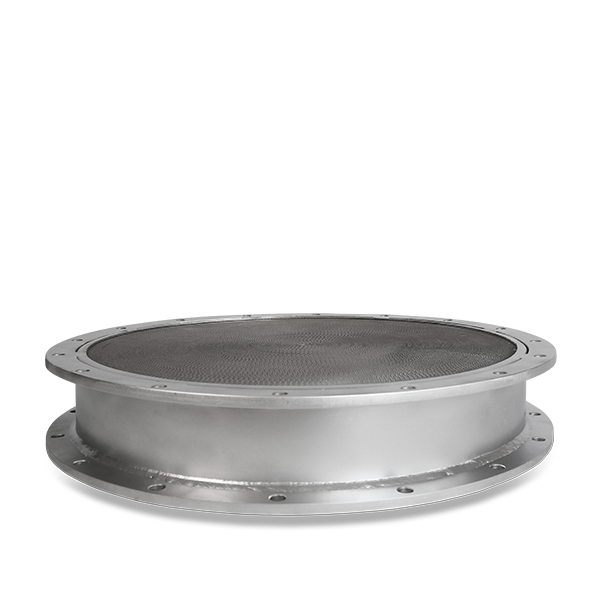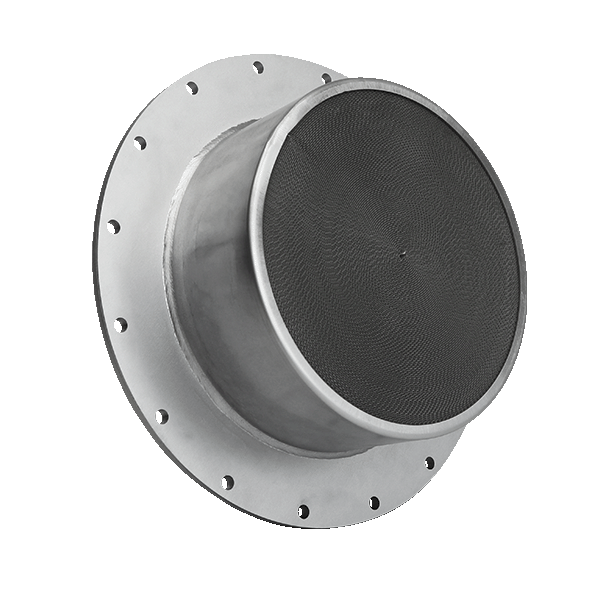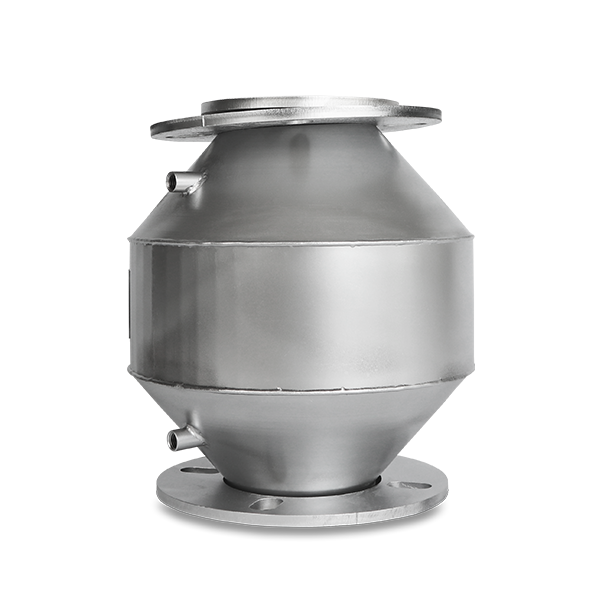INDEPENDENT OF MANUFACTURER.
SHORT DELIVERY TIME.
AVAILABLE FROM STOCK.
Oxidation catalysts
Oxidation
catalysts
Oxidation catalysts are used in lean-burn engines, gas turbines and special applications. They are mainly used to oxidize carbon monoxide and hydrocarbons (formaldehyde). There is no reduction of nitrogen oxides (NOx).
Oxidation catalysts are based on high-temperature stable foils made of heat-resistant alloys, which are given a honeycomb structure by a special winding. To safely reduce formaldehyde and carbon monoxide, the wound metal foils are coated with a special sulphur-resistant coating containing precious metals.
The Emission Partner oxidation catalysts are designed for high conversion performance of formaldehyde and carbon monoxide, as well as long-term stability.
All of our oxidation catalysts are also produced 100% in-house. In cooperation with the best measuring institutes in Germany, we offer you reliable compliance with the emission limits and also prepare you optimally for the measurement date.
Oxidation catalysts are used in lean-burn engines, gas turbines and special applications. They are mainly used to oxidize carbon monoxide and hydrocarbons (formaldehyde). There is no reduction of nitrogen oxides (NOx).
Oxidation catalysts are based on high-temperature stable foils made of heat-resistant alloys, which are given a honeycomb structure by a special winding. To safely reduce formaldehyde and carbon monoxide, the wound metal foils are coated with a special sulphur-resistant coating containing precious metals.
The Emission Partner oxidation catalysts are designed for high conversion performance of formaldehyde and carbon monoxide, as well as long-term stability.
All of our oxidation catalysts are also produced 100% in-house. In cooperation with the best measuring institutes in Germany, we offer you reliable compliance with the emission limits and also prepare you optimally for the measurement date.

Areas of application
General information on catalytic converters
At Emission Partner, we support you with the right catalytic converter for your exhaust system and help you to reduce your emissions. The task of a catalytic converter is to minimize pollutant emissions.
The catalysts are used in a variety of ways for the oxidation and reduction of gaseous pollutants. They are mainly used in combustion engines, gas turbines, boiler systems and special industrial applications.
Our oxidation catalysts are used for excess oxygen (lean-burn engines). If your system does not have an excess of oxygen availablewe install TWC (three-way) catalytic converters.
If NOx emissions also need to be reduced, this can only be achieved with SCR catalytic converters in systems with excess oxygen. These reduce NOx gases in accordance with the current requirements of the 44th BImSchV.
Catalysts with a honeycomb structure are created in order to realize the conversion rate of the pollutants in the most compact installation space possible. This is manufactured either as a coated metal structure (matrix) or from a ceramic (stones).
The Osurface of the catalysts is essentially determined by the cellularity of the matrix. The standard cell size is 200 cpsi (number of cells per inch² – corresponds to approx. 2.54 cm x 2.54 cm). In the case of full extrudates (ceramics), however, the cellularity is usually below 100 cpsi for production reasons and usually 300 cpsi for special applications (TWC).
The cellularity and design of the catalytic converters (diameter and depth) define the exhaust back pressure and the conversion rate of the system. For this reason, an analysis of the installation situation and general conditions is absolutely essential to ensure the optimum design of the system.
At Emission Partner, we support you with the right catalytic converter for your exhaust system and help you to reduce your emissions. The task of a catalytic converter is to minimize pollutant emissions.
The catalysts are used in a variety of ways for the oxidation and reduction of gaseous pollutants. They are mainly used in combustion engines, gas turbines, boiler systems and special industrial applications.
Our oxidation catalysts are used for excess oxygen (lean-burn engines). If your system does not have an excess of oxygen availablewe install TWC (three-way) catalytic converters.
If NOx emissions also need to be reduced, this can only be achieved with SCR catalytic converters in systems with excess oxygen. These reduce NOx gases in accordance with the current requirements of the 44th BImSchV.
Catalysts with a honeycomb structure are created in order to realize the conversion rate of the pollutants in the most compact installation space possible. This is manufactured either as a coated metal structure (matrix) or from a ceramic (stones).
The Osurface of the catalysts is essentially determined by the cellularity of the matrix. The standard cell size is 200 cpsi (number of cells per inch² – corresponds to approx. 2.54 cm x 2.54 cm). In the case of full extrudates (ceramics), however, the cellularity is usually below 100 cpsi for production reasons and usually 300 cpsi for special applications (TWC).
The cellularity and design of the catalytic converters (diameter and depth) define the exhaust back pressure and the conversion rate of the system. For this reason, an analysis of the installation situation and general conditions is absolutely essential to ensure the optimum design of the system.
You can find more information and products in our store.
Under Emission Partner Shop you will find our standard catalytic converters as well as measuring and engine accessories for all common engine types. Simply order online or make an inquiry using the following form.








